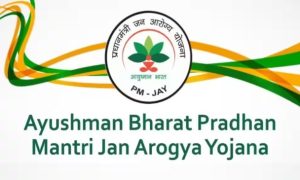All residential and non-residential Indians aged between 18-70 years are eligible to open an account with NPS.
The Government of India introduced the National Pension System (NPS) as part of the pension sector reforms in 2004. Under this defined contribution pension system, individual savings are pooled into a pension fund. They are invested in diversified portfolios comprising government bonds, corporate debentures, and equities by professional fund managers regulated by the Pension Fund Regulatory and Development Authority (PFRDA). Over the years, individual contributions will grow and accumulate based on the returns on investment made.
Read More: How Section 10(10D) Of IT Act Will Impact Non-ULIP Insurance Policies After March 31?
All residential and non-residential Indians aged between 18-70 years are eligible to open an account with NPS.
How It Works
According to the Department of Financial Services, NPS is administered through an unbundled architecture. The framework involves intermediaries appointed by the PFRDA Pension Funds, Points of Presence (PoP), Custodians, Central Recordkeeping Agency (CRA), National Pension System Trust, Trustee Bank, and Annuity Service Providers (ASPs).
Subscribers can choose one of the many Pension Fund Managers (PFM) that suits them the best. They are also allowed to change the PFM once in a Financial Year (FY). A minimal Fund Management Charge of 0.03-0.09 per cent is applicable.
Account Types
An individual opening an account with NPS is allotted a unique Permanent Retirement Account Number (PRAN). This is portable across jobs and geographies and stays with the subscriber throughout their lifetime. With their PRAN, they can opt for a Tier-I account, or upgrade it one level higher.
Tier-I account is the non-withdrawable permanent retirement account. The subscriber’s regular contributions are credited and invested based on the chosen portfolio or fund manager. The minimum Contribution during A/C opening is Rs 500.
Read More: Recurring Deposits Or Mutual Funds, What’s Better For Investment?
Tier-II account can be held only if the subscriber has an active Tier-I account. Tier-II account allows withdrawals as per the needs of the holder. The minimum Contribution during account opening is Rs 1,000.
Tax Benefits
Only Tier-I provides tax benefits to the subscriber. With this type of account, the employee’s own contribution towards NPS is eligible for tax deduction under section 80 CCD (1) up to Rs 1.50 lakh. Under section 80CCD 1(B), the subscriber is also allowed a tax deduction for contributions to NPS up to Rs 50,000.
The Employer’s contribution towards NPS is eligible for tax deduction under Section 80CCD (2). This rebate is over and above the limit prescribed under Section 80C.





































